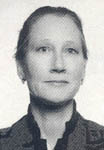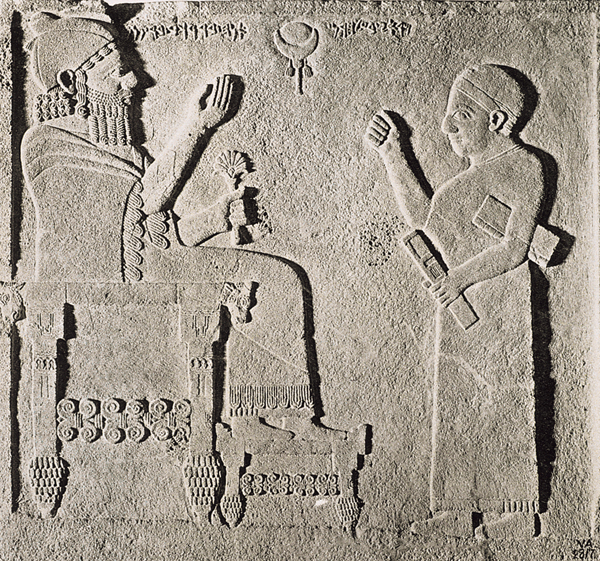
The ancient Israelites were not a people of the book. King David had no Bible. Neither did the prophets. The later tradition that Moses wrote the Bible is never even mentioned in the biblical text. In biblical Israel animal sacrifice—not scripture—was the basis of worship. So how did the concept of a sacred written text develop?
In Jewish, Christian and Muslim tradition, the word is the primary mode of God’s revelation to humans. The belief that humans can gain access to God’s word through written scripture—can even hold it in their hands—is one of the distinguishing characteristics (along with monotheism) that sets these three religions apart from other living religious traditions. We can glimpse the initial stages that led to the concept of a written scripture in the Old Testament or Tanakh (the Hebrew Bible).
In the Bible, the most common Hebrew term for God’s “word” is dabar. But I’d like to begin with the term qol, translated “voice,” which is used to describe the thunderous noise made by Yahweh (the personal name of the Israelite God).
In the oldest strands of the Bible (that is, the Song of the Sea in Exodus 15 and the Song of Deborah in Judges 5), Yahweh is portrayed as a storm god and divine warrior who speaks not in words but in thunder. This is clear in Psalm 29, which is a veritable hymn to the thundering “voice of God” as it triumphs over the mighty waters of chaos, shakes the earth and inspires the people of Yahweh to cry “Glory!’
The voice (qol) of Yahweh is over
the waters;
the God of glory thunders,
Yahweh, over the mighty waters.
The voice of Yahweh is power;
the voice of Yahweh is majesty;
the voice of Yahweh breaks cedars…
The voice of Yahweh kindles flames of fire;
the voice of Yahweh convulses
the wilderness;
Yahweh convulses the wilderness of Kadesh;
the voice of Yahweh causes hinds to calve,
and strips forests bare;
while in his temple all say “Glory.”
(Psalm 29:3–5, 7–9)

As Ted Hiebert of McCormick Theological Seminary notes in his excellent, 15-column-long entry on the “word of God” in the Anchor Bible Dictionary, the divine word is relational, that is, it relates something. It connects the speaker to the hearer. A thundering God is assuredly awesome, but is a thundering God relational? Yes, once you realize that the thunderstorm is the means by which Yahweh communicates his plan for the world. God uses the storm to subdue the power of chaos (usually symbolized in the Bible as the sea or a sea monster) and thereby ensures an ordered, fruitful and peaceful world for all God’s creatures (Psalms 104, 74:12–17). Put more simply, Israelite farmers depended on Yahweh’s storms to combat drought, ensure a harvest and, by extension, protect life.
How do we get from the thunder of the storm god to the divine word and written scripture? The answer is that by defeating chaos Yahweh the storm god becomes the divine king. In Exodus 15, for example, after drowning his enemies in the sea, Yahweh “reigns for ever and ever” (see also Psalms 24, 29, 93). In preliterate ancient society, writing was an activity associated above all with kings, who maintained chancelleries full of scribes. As shown above in an eighth-century B.C.E. relief of a scribe standing before the Aramean king Bar Rakib, the scribe’s task was to hear the sovereign’s word and communicate (relate!) that royal decree to the people. Yahweh did not have scribes, however; he had prophets who communicated divine decrees. In Isaiah 6, the prophet recognizes Yahweh’s role as king: “I beheld my Yahweh sitting on a high and lofty throne” (just like the scribe before King Bar Rakib in the relief). The voice (qol) of Yahweh asks, “Whom shall I send?” (Isaiah 6:8) and then dictates to Isaiah the exact words he must “go and say to this people.”
At this point, however, the prophet received God’s word aurally and communicated it orally. Yahweh empowers Jeremiah to “speak whatever I command you” (Jeremiah 1:7), not write it down.
The Bible itself suggests that God’s word—still mediated through the prophets—came to be understood as a written document only later, in the context of war and exile. Many scholars believe that the shock of the Babylonian destruction of Jerusalem in 586 B.C.E. and the subsequent Exile, with its threat of cultural oblivion through assimilation, prompted the conscious collection and written preservation of Israel’s religious and historical traditions—a collection that eventually became our Bible. In Ezekiel 1–3, we once again see the enthroned storm god delivering divine words to the prophet, an exile in Babylon. But now the prophet receives God’s words in the form of a megillat sepher, a “written scroll”: “As I [Ezekiel] looked, there was a hand stretched out to me, holding a written scroll. He unrolled it before me, and it was inscribed on both the front and the back; on it were lamentations, dirges and woes” (Ezekiel 2:9–10). The prophet literally devours God’s words: He eats the scroll, which tastes “as sweet as honey”! (Ezekiel 3:3).
Possession of the divine word allows the prophet to share in God’s creative power. When God puts his words into Jeremiah’s mouth, the prophet is able to “pluck up, pull down, destroy, overthrow, build and plant” (Jeremiah 1:10). Similarly, Ezekiel proclaims the “word of God” and dry bones come to life (Ezekiel 37:4). The perception that the word of God—like the thunder (qol) of God—is laden with a power of its own helps indicate why scripture came to be valued as more than mere text.

